 Animals
Animals  Animals
Animals  History
History 10 Most Influential Protests in Modern History
 Creepy
Creepy 10 More Representations of Death from Myth, Legend, and Folktale
 Technology
Technology 10 Scientific Breakthroughs of 2025 That’ll Change Everything
 Our World
Our World 10 Ways Icelandic Culture Makes Other Countries Look Boring
 Misconceptions
Misconceptions 10 Common Misconceptions About the Victorian Era
 Mysteries
Mysteries 10 Strange Unexplained Mysteries of 2025
 Miscellaneous
Miscellaneous 10 of History’s Most Bell-Ringing Finishing Moves
 History
History 10 Great Escapes That Ended Right Back in Captivity
 Weird Stuff
Weird Stuff 10 Fascinating Things You Might Not Know About Spiders
 Animals
Animals 10 Animals That Humiliated and Harmed Historical Leaders
 History
History 10 Most Influential Protests in Modern History
 Creepy
Creepy 10 More Representations of Death from Myth, Legend, and Folktale
Who's Behind Listverse?

Jamie Frater
Head Editor
Jamie founded Listverse due to an insatiable desire to share fascinating, obscure, and bizarre facts. He has been a guest speaker on numerous national radio and television stations and is a five time published author.
More About Us Technology
Technology 10 Scientific Breakthroughs of 2025 That’ll Change Everything
 Our World
Our World 10 Ways Icelandic Culture Makes Other Countries Look Boring
 Misconceptions
Misconceptions 10 Common Misconceptions About the Victorian Era
 Mysteries
Mysteries 10 Strange Unexplained Mysteries of 2025
 Miscellaneous
Miscellaneous 10 of History’s Most Bell-Ringing Finishing Moves
 History
History 10 Great Escapes That Ended Right Back in Captivity
 Weird Stuff
Weird Stuff 10 Fascinating Things You Might Not Know About Spiders
10 Totally Bizarre Holes In The Earth
The recent discovery of a trio of holes in Siberia has scientists puzzled, conspiracy theorists excited, and the rest of us taking a new look at the stability of the ground beneath our feet. The surface of the Earth is riddled with holes—some on land, some underwater, and some that act as a doorway to an entirely different world.
10Siberia’s Holes
Three holes have recently been found in Siberia. The first, whose size has been estimated to be 50–100 meters (165–330 ft) across, has been found to have a lake at the bottom of it. The second hole, miles away from the first, is only about 15 meters (50 ft) wide. The third hole, accidentally found by reindeer herders, is a nearly perfect cone-shaped hole about 4 meters (13 ft) wide and 60–100 meters (195-330 ft) deep.
As indicated by the ring of debris and dirt around each hole, the massive holes were created by a force that came from inside the Earth and exploded outward, leading to some interesting theories. Some insist that it is related to the gas industry prevalent in the area, but the holes are so far away from gas lines that the idea was dismissed outright by scientists. Other theories include stray missiles, mischievous pranksters, and there is, of course, no shortage of theories about extraterrestrial involvement.
The real cause might be a little more terrestrial but no less strange. One of the working theories about the holes is that they’re a kind of reverse sinkhole that hasn’t even been scientifically documented yet. In these cases, it’s thought that instead of collapsing in on itself, the holes were initiated by an underground collapse caused by the melting of permafrost. The holes then filled with natural gas, and once the pressure became too great, dirt and debris erupted into the air rather than falling into the underground space.
According to some locals, the holes aren’t actually new, and scientists agree that the growth of vegetation around them indicates that they could have been there for at least a few years. The second hole discovered, located on a peninsula lovingly referred to as “the end of the world,” was allegedly observed by locals as early as September 2013. Eyewitness accounts differ, though, with some saying it was an explosion from the Earth and others claiming to have seen something falling from the sky.
9The Kola Superdeep Borehole
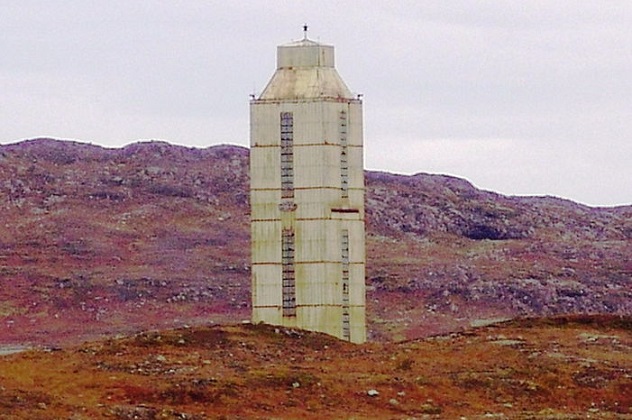
Not all holes in the Earth’s crust are naturally formed or mysterious in origin. From 1970–1994, geologists in Russia dug the biggest hole in the Earth that anyone had ever seen in the name of science. The result was the Kola Superdeep Borehole, and it eventually reached a depth of 12 kilometers (7.5 mi).
Along the way, they found some amazing things. Tunneling through rock at these kinds of depths is tunneling through history, after all. The scientists found the remains of life that had existed on the surface two billion years ago. At a staggering depth of 6,700 meters (22,000 ft), which is approximately 22 Eiffel Towers stacked on top of each other, biologists found tiny plankton fossils. While different types of rock were obviously expected to be seen while digging, it’s incredible that the relatively fragile organic compounds withstood the immense pressure built up over thousands of years from the miles of rock that had formed on top of them.
Examining intact rock cores proved to be difficult. Released from the extreme pressure found at their depths and exposed to lower temperatures, rock samples pulled from the borehole deformed themselves as they were removed. Pressures and temperatures were expected to rise the deeper the hole was drilled, but scientists found that the temperatures were much higher than they had predicted: By the time they had reached a depth of 10,000 meters (33,000 ft), the temperature had skyrocketed to 180 degrees Celsius (356 °F).
Sadly, digging stopped when it no longer became possible to combat the heat. The hole is still there, of course, near the Russian town of Zapolyarny, but it’s been covered with a metal cap.
8The German Continental Deep Drilling Program And The Earth’s Heartbeat
In 1994, drilling stopped on the German superdeep hole, originally conceived as one of the most ambitious geoscientific projects ever. The goal of the project was to allow scientists the chance to study things like the effects of stress on layers of rock, the presence of abnormalities in the Earth’s crust, the structure of the crust, and how heat and stress were conducted through it. The $350 million project left Windischeschenbach, Germany with a hole 9,100 meters (30,000 ft) deep and as hot as 265 degrees Celsius (509 °F).
Amid a variety of scientific experiments, Dutch artist Lotte Geeven had something much different in mind for the superdeep borehole: She wanted to know what the planet sounded like. First dismissed by the real scientists, who told her it was obviously silent down there, Geeven persisted. She lowered a geophone into the hole to record ultrasonic waves beyond the ability of a human ear to detect. After running the data through a computer program that translated the data to a frequency we can hear, she had the sounds of the Earth. She likened it to the sound of a thunderstorm in the distance, but it sounds eerily like a heartbeat.
7Dead Sea Sinkholes
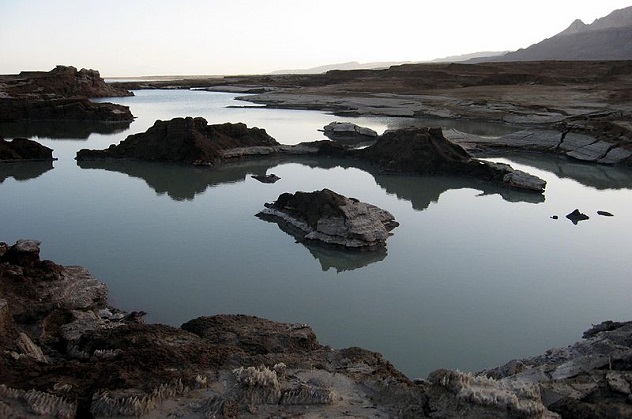
No one knows exactly how many sinkholes have appeared around the Dead Sea, but it’s estimated that 2,500 have been created since 1970, 1,000 in the last 15 years alone. Like the holes appearing in Siberia, they’re signs of environmental change.
The Dead Sea is fed by the Jordan River, and every year, less and less water flows into it. The sea itself is only about one-third as large as it was in the 1960s, and the draining of the lake is causing the sinkholes, along with the demise of resorts and hotels that were once lakeside but now stand miles from the shore. As the salty water of the lake recedes through the ground, freshwater advances to meet it. When that freshwater is introduced into the ground with its high salt content, much of the salt is dissolved. The ground is weakened and starts to collapse.
The Dead Sea has always been in a state of change. It was once connected to the Sea of Galilee, but that connection dried up about 18,000 years ago. Now, changes are more often man-made. The water that once flowed into it to maintain its delicate balance is being siphoned away and re-routed throughout Jordan and Syria, meaning that it only gets about 10 percent of the water it needs to maintain its size.
At one time, the sea was a hugely popular destination for those making religious pilgrimages or hoping to be healed by its mystical waters. Now, a more frequent sight are the warning signs cautioning the dangers of spontaneously appearing sinkholes. There is a bright side, though: If you’re swallowed by a sinkhole, it’ll be named after you.
6Dean’s Blue Hole

The deepest blue hole (which are holes located underwater) that’s been discovered so far is Dean’s Blue Hole in the Bahamas. Reaching a staggering depth of 202 meters (663 ft), Dean’s Blue Hole is more than twice as deep as most other blue holes, making it a favorite of professional deep-sea divers.
In 2010, William Trubridge set a record for diving 101 meters (331 ft) into the hole with no outside oxygen or other gear. A Brooklyn diver died trying to beat that record in 2013 after being underwater for more than three and a half minutes, surfacing, and immediately losing consciousness. Competition isn’t an unfamiliar thing at this blue hole—it’s the site of an event called Vertical Blue, where more than 30 divers meet annually to compete in different free-diving events.
Although it attracts adventurous people from all over the world, those who live near Dean’s Blue Hole in Clarence Town and Long Island tend to stay away from it. According to legend, the hole was dug by the devil, and he still can be found there, dragging people who dare to swim in the hole to their deaths. Those who do brave the hole have found a breathtaking array of sea life, including schools of fish and groups of sea turtles that are invariably friendly and curious about the oddly shaped creatures they’ve suddenly found in their tropical paradise.
5Mount Baldy’s Randomly Appearing Holes
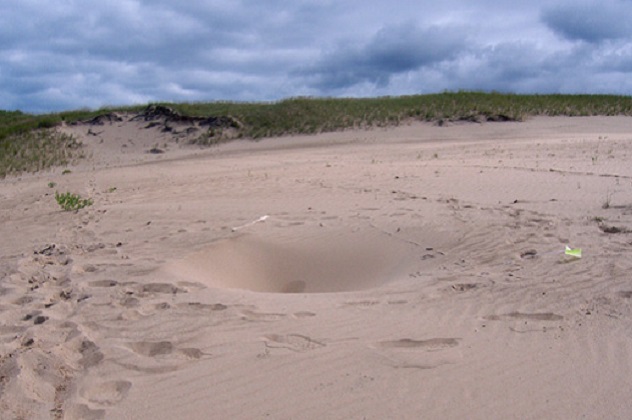
In 2013, a six-year-old boy exploring the sand dunes of Mount Baldy in Indiana Dunes National Park was swallowed by a sinkhole that suddenly appeared beneath him. The boy recovered after a three-hour ordeal in which he was buried under a little more than 3 meters (11 ft) of sand, and other sinkholes have been randomly appearing ever since.
Geologists are baffled by the phenomenon at Mount Baldy. As the landscape is made of sand, which doesn’t create air pockets, none of the conditions necessary for sinkholes to form should be present. In fact, when the sinkholes do occur, they only last about a day before they’re filled in with surrounding sand. The use of ground-penetrating radar has yielded no clues.
A year after the first sinkhole was seen, they’re not only still appearing, they pop up with such frequency that the park is still off-limits. In an attempt to stabilize the sand dune, grasses are being planted with the hope that their root system will stop erosion and ground-shifting. Some scientists believe that the instability of the sand dune may have something to do with its rather storied history, which includes supplying much of the sand once used to make Mason jars.
4The Devil’s Sinkhole
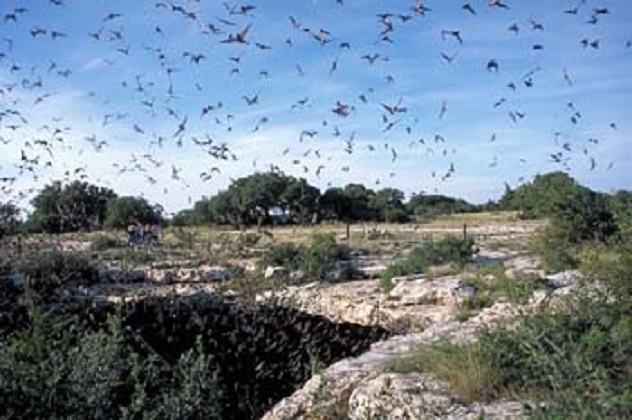
The Devil’s Sinkhole is a massive underground chamber located in Edwards County, Texas. An opening 15 meters (50 ft) wide leads to a cavern 106 meters (350 ft) deep that now plays a unique ecological role as home to one of the largest known colonies of Mexican free-tailed bats. While they’re not actually allowed into the cavern, visitors can see more than three million bats fly from the entrance to the sinkhole every night throughout the summer months.
The history of the sinkhole is shrouded in mystery. The cave was raided by treasure-seekers and artifact-hunters before it was a protected site, and arrowheads and dart tips found there dated to 4000–2500 B.C. Later, the sinkhole was used as shelter for cowboys traveling to the West on horseback and undoubtedly for people of other, shadier occupations. More of its history was destroyed when manufacturers of ammonia fertilizer began harvesting bat guano from the cave, which has made it all but impossible to accurately trace the history of the cavern.
3The Sawmill Sink
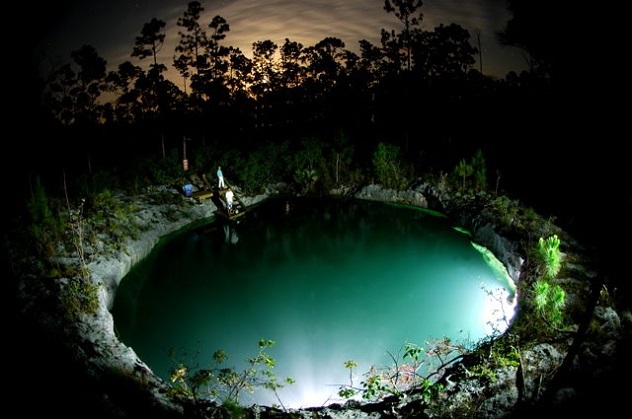
The Sawmill Sink is another blue hole in the Bahamas, but it has much more scientific significance than simply attracting extreme sports athletes. The blue hole was the site of an archaeological dig that has changed what scientists think the landscape was like 1,000 years ago.
The Sawmill Sink is unique in that it was once dry, but as water levels rose, it slowly filled with water, which preserved the bones that were hiding there. Fossils found include the remains of a giant tortoise, which scientists didn’t even think lived in the area, as well as birds, seeds, flowers, and even the remains of plants that have had their green coloring and chlorophyll preserved.
Perhaps most intriguing are the remains of giant crocodiles that researchers believe were killed off by the people living in the area at the time. The blue hole also held the remains of one of the earliest known residents of the Bahamas, estimated to be about 1,050 years old.
2The Black Hole Of Andros
The Black Hole of Andros, located on the island of South Andros in the Bahamas, doesn’t share the same clear, deep blue color of other holes in the area. It’s not exactly black but a very dark purple, and that’s because about 18 meters (60 ft) down the hole, there’s a thick, toxic layer of bacteria floating between a heavily oxygenated upper level and an oxygen-free lower level.
The island itself is inhospitable, consisting of little more than mud, making it all but impossible to reach the Black Hole without specific equipment like helicopters. It was first explored by scientist and diver Steffi Schwabe, who was the first to cross through the milky, inky layer of bacteria that a fellow diver described as like swimming through paint. Underneath, she found a thin layer of clear water and then another purple layer that she described as looking like jelly.
The strange layers of water have very high levels of toxic hydrogen sulfide. They also contain bacteria that has not only bred between the water levels but also resulted in the preservation of water conditions that have remained largely unchanged for the last 3.5 billion years.
1The Son Doong Cave
While technically mostly a cave system, Vietnam’s Son Doong is accessible by several large holes in the surface of the Earth. It was first explored in 2009, after one of the holes was discovered by a local farmer. It was so thoroughly buried in the jungle that it was thought to be pure luck that he found it at all. When members of the British Cave Research Association entered the hole, they found something absolutely breathtaking.
The cave has been declared the largest in the world, and it wasn’t easy to explore. It was created between two and five million years ago, carved from the limestone by an underground river. In some places, the erosion reached so close to the surface that parts of the cave roof collapsed to form more holes. These holes allowed enough sunlight to reach the cave floor that a massive jungle began to grow in the cave. There’s a 60-meter (200 ft) wall of calcite, an underground river and waterfalls, and stalagmites and stalactites that have grown to 80 meters (265 ft) in length.
This cavernous jungle is also home to an impressive array of wildlife, including poisonous centipedes and whitefish. There are massive chambers that can hold an entire city block, complete with skyscrapers, as well as bamboo forests and giant cave pearls. The land that time forgot is a surreal landscape just under the feet of villagers, showing that perhaps the age of exploration isn’t over just quite yet.
+The Deluxe Mystery Hole
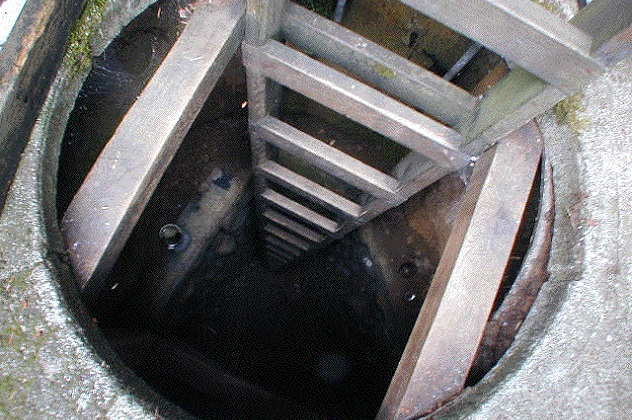
Just because you don’t have thousands of dollars and the time to go scampering off to the Bahamas, Siberia, or Vietnam, there’s no reason you can’t go exploring some holes. The Deluxe Mystery Hole is located in Oregon, just off the I-205 freeway. According to the owner and promoter, it’s the most amazing archaeological site in the state, buried beneath a simple backyard garden. It’s been explored via psychic archaeology, he says, which has revealed wonders with names like the Black Obsidian Mirror of a Higher Truth, the Door That’s Never Been Opened, the Mystery Tower, and the Giant Double Arch deep within the hole.
It’s supposedly been estimated to be 5,000 years old, but the hole’s keeper points out that with aliens, you can never really be certain. Going into the mystery hole will expose you to the Enchanting Vapors of Encouragement, although a disclaimer informs hopefuls that they won’t actually do anything. Don’t forget to stop at the Mystery Wishing Pipe, and no visit to the Deluxe Mystery Hole would be complete without getting a good, firm grip on the Mystery Pole. It’s also important to note that the owner of the mystery hole is one Pastor Barron, who styles himself the leader of the Tunnel People and head of the Universal Church O’ Fun. Also, he would like you to phone ahead before visiting.








